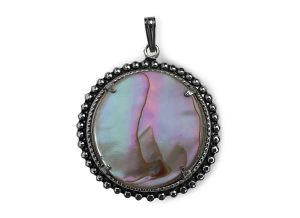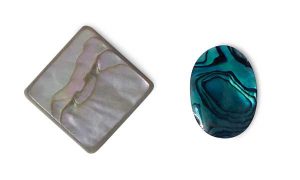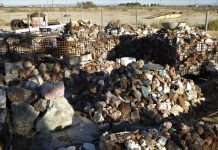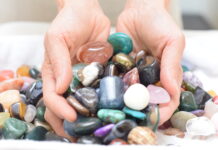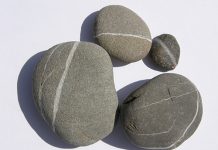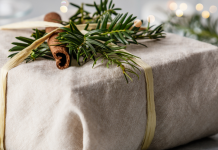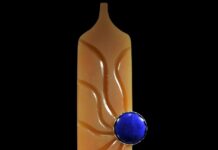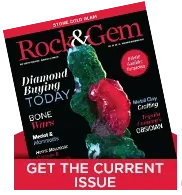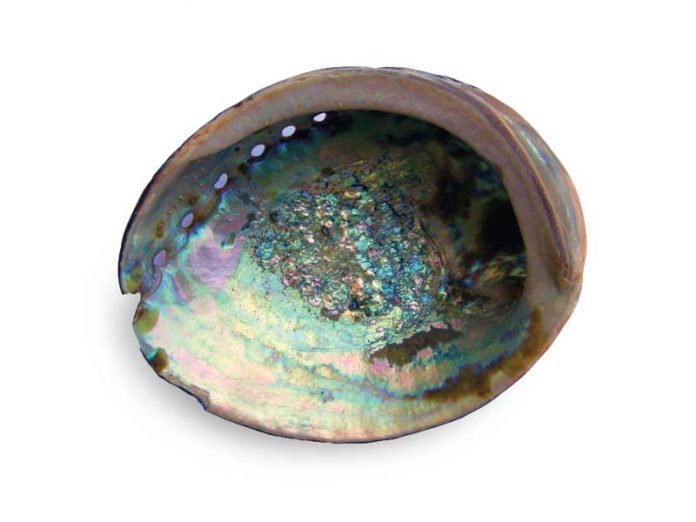
Abalone is prized for its dazzling iridescence and richly colored nacre and has earned a unique place in the lapidary world. While often grouped with other types of mother-of-pearl, abalone’s nacre stands apart, displaying vibrant blues, greens, and purples that set it apart from the softer, more uniform sheen of oyster or mussel shell. Though technically a type of mother-of-pearl, abalone is celebrated in its own right as a gemstone material, sought after by jewelers, inlay artists, and collectors alike.
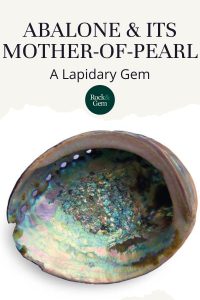
What is an Abalone?
Abalone is a marine snail that’s shaped like an ear and found all around the Pacific Rim from the west coast of North America to the shores of New Zealand and Australia, the Philippines, Japan and elsewhere.
What is Mother-of-Pearl?
Abalone shells are composed of layers of nacre, or mother-of-pearl. Abalone mother-of-pearl shimmers with iridescent colors much like black opal. A single piece may have red, orange, yellow, green, blue, and purple intermingling and shifting as you move it under a lamp. In New Zealand, abalone is called paua. In the United Kingdom, abalone is called ormer.
Beach Collecting Sustainability
Most abalone in the U.S. comes from the Pacific Coast, where these mollusks have been harvested for food. (One person has described it as “fish-flavored shoe leather.”) At times, colonies have experienced overfishing and collapse. They have been protected now and again, and some beaches where shells wash ashore are national preserves where beach collecting is prohibited. Most lapidary artists use shells that were collected long ago. We should do all we can to sustainably maintain and protect the creatures that produce such a lapidary wonder!
FAQ: Abalone Mother‑of‑PearlWhat is the main difference between abalone vs. mother-of-pearl?The main difference is that abalone comes from a specific type of marine mollusk with a thick, iridescent shell, while mother-of-pearl (nacre) is the inner shell lining found in many mollusks. Abalone nacre has more vivid colors, while mother-of-pearl is typically softer and more uniform in sheen.
Is abalone mother-of-pearl valuable?Abalone is often valuable due to its vibrant rainbow hues and limited availability. Certain types, like New Zealand pāua, are especially prized. Mother-of-pearl is more common and widely used in affordable inlays and buttons. Can you use abalone and mother-of-pearl in the same jewelry piece?Yes, combining both materials can create visual contrast. Abalone offers bold, shifting color, while mother-of-pearl adds a subtle, elegant shimmer.
How can you tell if what you have is real?Real abalone has a multicolored, almost psychedelic look with deep blues, purples, and greens. Mother-of-pearl is smoother, more subtle, and often white, silver, or cream. Imitation pieces often lack depth, color variation, and natural imperfections. |
Care Tips for Using Abalone Shell in Lapidary Work
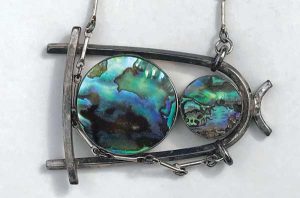
While abalone shell has been used for millennia to craft beads, inlay, and other lapidary works, anyone cutting or grinding it needs to exercise lapidary safety precautions. These include wearing a facemask and cutting/grinding under running water to minimize dust. Abalone dust, especially dry airborne dust, has been known to cause a range of health problems from stuffed-up noses to nausea to severe respiratory issues. Some people are more sensitive than others, but anyone working with abalone should use plenty of water as a lubricant and keep good airflow around the workstation. This is one material that only experienced lapidary artists should select!
This story previously appeared in Rock & Gem magazine. Click here to subscribe. Story & photos by Jim Brace-Thompson.


